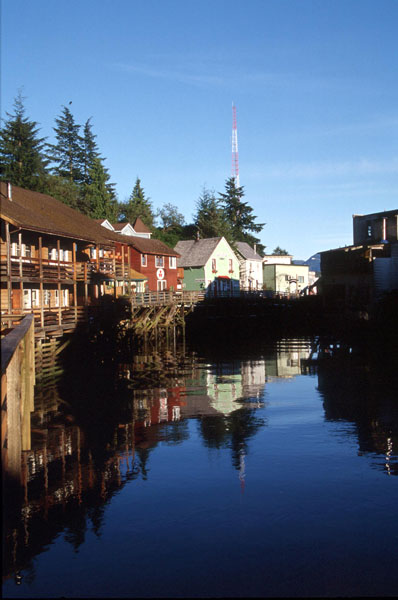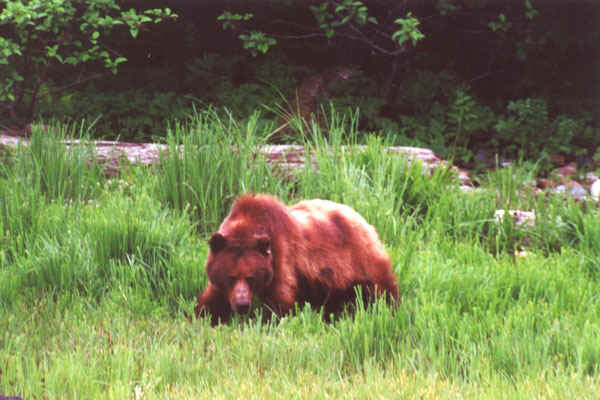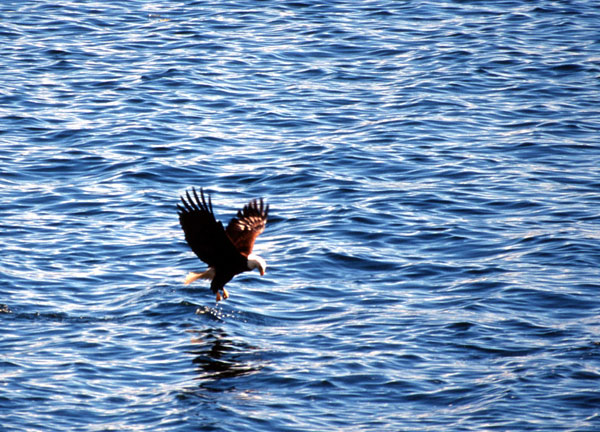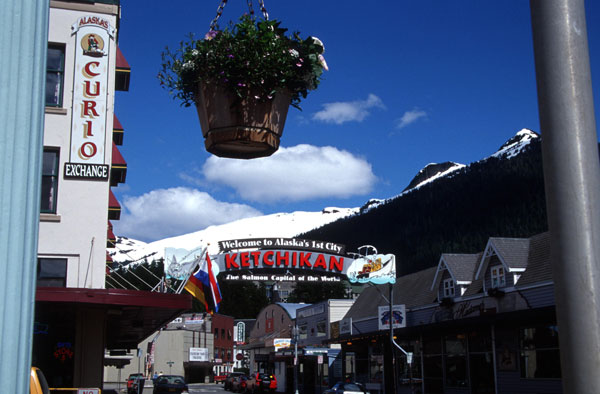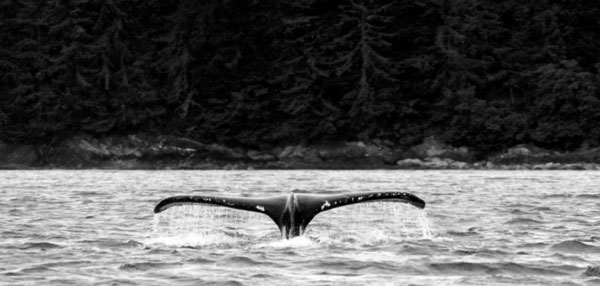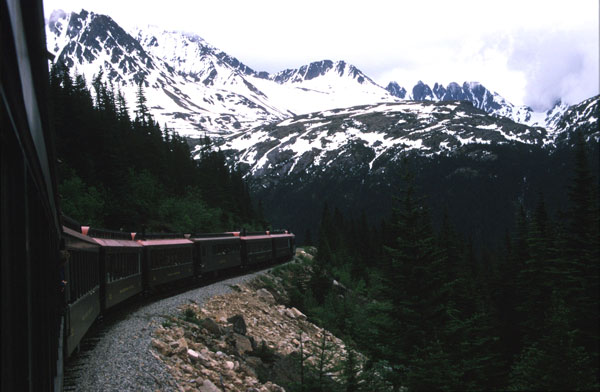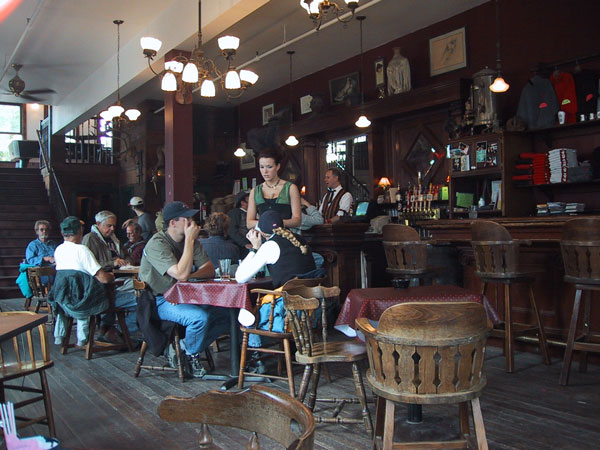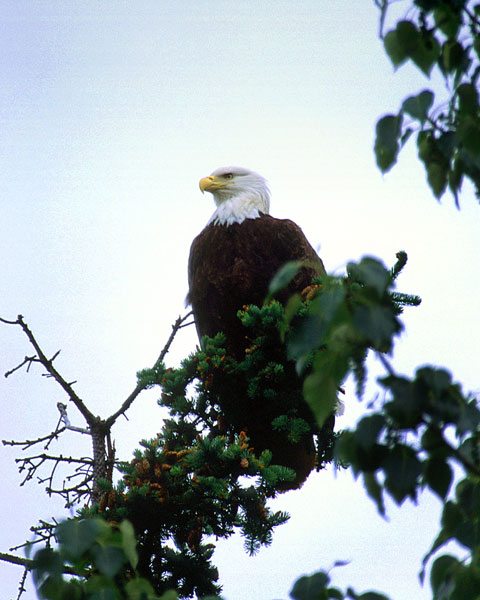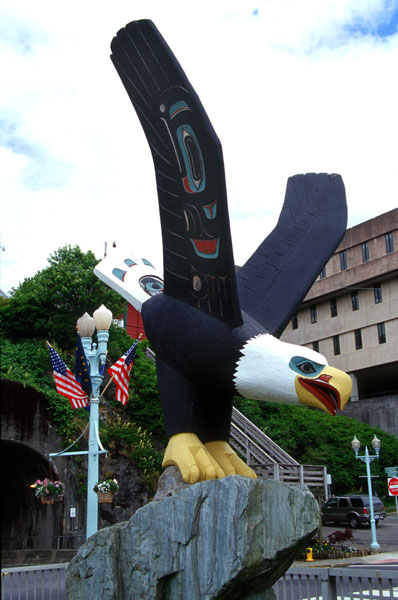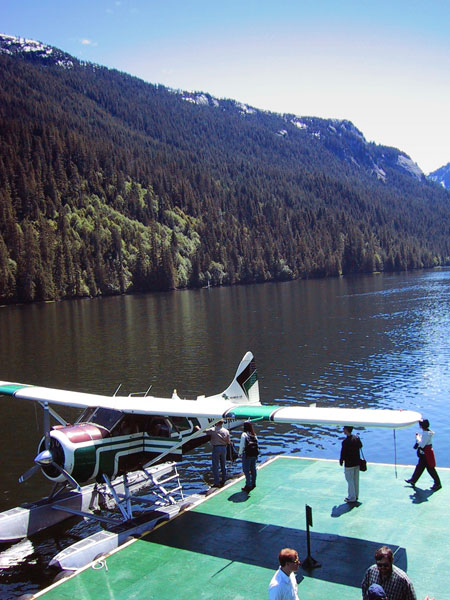|
Photo opportunities
through Alaska’s
Inner Passage
by Peter Kotsinadelis
Beautiful photographs of Alaskan wildlife and wilderness always fascinated me. When a colleague approached me with an opportunity to visit this wondrous land, I jumped at the chance. North to Alaska! With three weeks set aside for the trip, the plan was to garner the best possibilities for photo opportunities. The state’s huge physical size posed our first challenge; both Texas and California would fit inside the borders of Alaska. After some discussion, we chose to travel southeast Alaska’s famous Inside Passage, where several cities and national parks offered our best chance for photo opportunities. The benefit in visiting during the summer months is you have more than 18 hours of daylight that increases as you go farther north. Cruise ship tourism drives most of the local economy here. If you prefer to avoid crowds, plan your trip to hit destinations when the big cruise ships are not in dock, but bear in mind that most establishments will be closed that day. Take your longest lenses and a wide angle as well because subject matter will vary. I used a large photo backpack loaded with two camera bodies and lenses ranging from 20mm to 400mm, along with a 1.4x and 2x tele-converters. While you can buy film and batteries in most of the areas you will visit, it is much less expensive and far more convenient to bring your own. And we’re off . . . For the first leg of the trip we took a 39-hour on the Alaska Marine Highway ferry from Bellingham, Washington to Ketchikan, Alaska. This is Alaska’s southernmost city and only reachable by boat or plane. The ferry was comfortable and a very affordable way to witness the beautiful scenery of the Pacific Northwest. Many refer to this as the poor man’s cruise since the ferry is transportation and not much more. Although we had a berth, others slept in lounge chairs or set up tents on the rear of the ferry’s upper deck using duct tape to secure the tents to the deck. The tents were closely spaced and the "tent city" resembled a grouping of colorful bubbles. The long trip north provides plenty of opportunity to photograph the breathtaking scenery, brightly colored tugboats pulling multicolored cargo containers, and wildlife both in water and on shore.
Arriving in Ketchikan, we headed to a cannery where we spotted bald eagles earlier. The name Ketchikan means "thundering wings of an eagle" and a large and colorful eagle carving dominates the center of town. At the cannery, adult eagles were teaching their young how to drop their talons into the water. We felt fortunate to witness this parenting and spent as much time gazing at these beautiful creatures as we did photographing. Keep in mind that something like this requires a long lens, preferably 400mm to 600mm and 1.4x or 2x extender, to get in close. We stopped in to see a Totem pole in the making at Saxman Village and later visited Totem Bight State Park where more than 30 totem poles were on display. Each is uniquely carved and tells a story of a culture that had no written language. Back in town the most famous and most photographed area is Creek Street. This area of town was a red light district until the mid-1950s, and is now a collection of brightly painted shops selling arts, crafts and gifts. A great side trip here was a tour of nearby Misty Fjords inside the 17-millionacre Tongass National Forest. There are dramatic granite cliffs, lush vegetation and wildlife on both land and sea. The best option was to take a boat out and fly back, maximizing our photo opportunities, which included spectacular aerial views of huge waterfalls and remote mountain lakes on the return trip. Juneau Juneau is the capital of Alaska and its most populated city, with 30,000 residents. Named for prospector Joe Juneau, it’s a city rich in history. The downtown area is where the ships come in and where you get can see the effects of the Gold Rush. We stayed at Inn at the Waterfront, a turn-of-the-century building once home to a brothel and now a bed & breakfast and restaurant. Just a few miles from the center of town is Mendenhall Glacier National Park. Once at the park, you are less than a mile from the face of a glacier that is 1.5 miles wide and 12 miles long. If you want a closer look, sightseeing flights land on top of the glacier where you can get out and walk around. Bring a warming filter as overcast skies are more the norm than sunshine. In town, the Mt. Roberts tram takes you up 2,000 feet to the highest point in Juneau. At the top are hiking trails, as well as a native theater, restaurant, and gift shops. You may spot ravens, eagles, deer, marmots, mountain goats, bears, and even wolves .
On a whale watching tour, we were able to see a variety of wildlife, including otters, seals, whales and bears. We also spotted one large brown bear on the northern coast of Admiralty Island and were able to get close enough to photograph it. Using a 400mm lens with a 2x extender allowed me to fill the frame. (Thank goodness for Image Stabilization lenses.) Make sure while in Juneau to tour the spectacular Tracy Arm Fjord for shots of huge waterfalls, icebergs, and wildlife, such as seals, bald eagles and whales. At the twin tidewater Sawyer glaciers, you will hear the grinding and thunderous cracking as calving ice glaciers drop into the water. Haines Haines is a small, artsy Alaskan town located in the Chilkat River Valley about 70 miles north of Juneau. Here you can tour the Alaska Indian Arts Center or watch the Chilkat Dancers interpret ancient Indian legends at the Chilkat Center for the Arts. In the center of town is the American Bald Eagle Foundation where you can learn more about eagles and talk with the Foundation’s director and resident photographer Dan Hart. Every year during the months of October and November, thousands of bald eagles congregate in Haines for the beginning of the salmon run. While the salmon are the reason for the eagles visit, the yearly arrival of such a large number of bald eagles draws hundreds of photographers from all over the world. This is the busiest time of the year and with fewer hours of daylight, so if you do decide to head to Haines in November plan your trip and your time in Haines well.
Skagway The Gold Rush city of Skagway is tucked in a fold of the mountains at the north end of the Lynn Canal. The city’s historic district is located inside the Klondike Gold Rush National Historical Park. We stayed at historic Skagway Inn, a one-time brothel.
A small town, Skagway comes to life when the cruise ships dock. Tourism is very well organized, with many locals dressing in turn-of-the-century costumes. In town you will see horse-drawn carriages, helicopter tours, and many other places you can visit within walking distance. While the town itself is a wonderful place to photograph, you can also take the White Pass and Yukon Railroad for a tour that takes you up the summit to the US/Canadian border. This three-hour narrated trip offers beautiful views of mountains, cascading waterfalls, and other scenes as it takes you nearly 3,000 feet above sea level.
|
